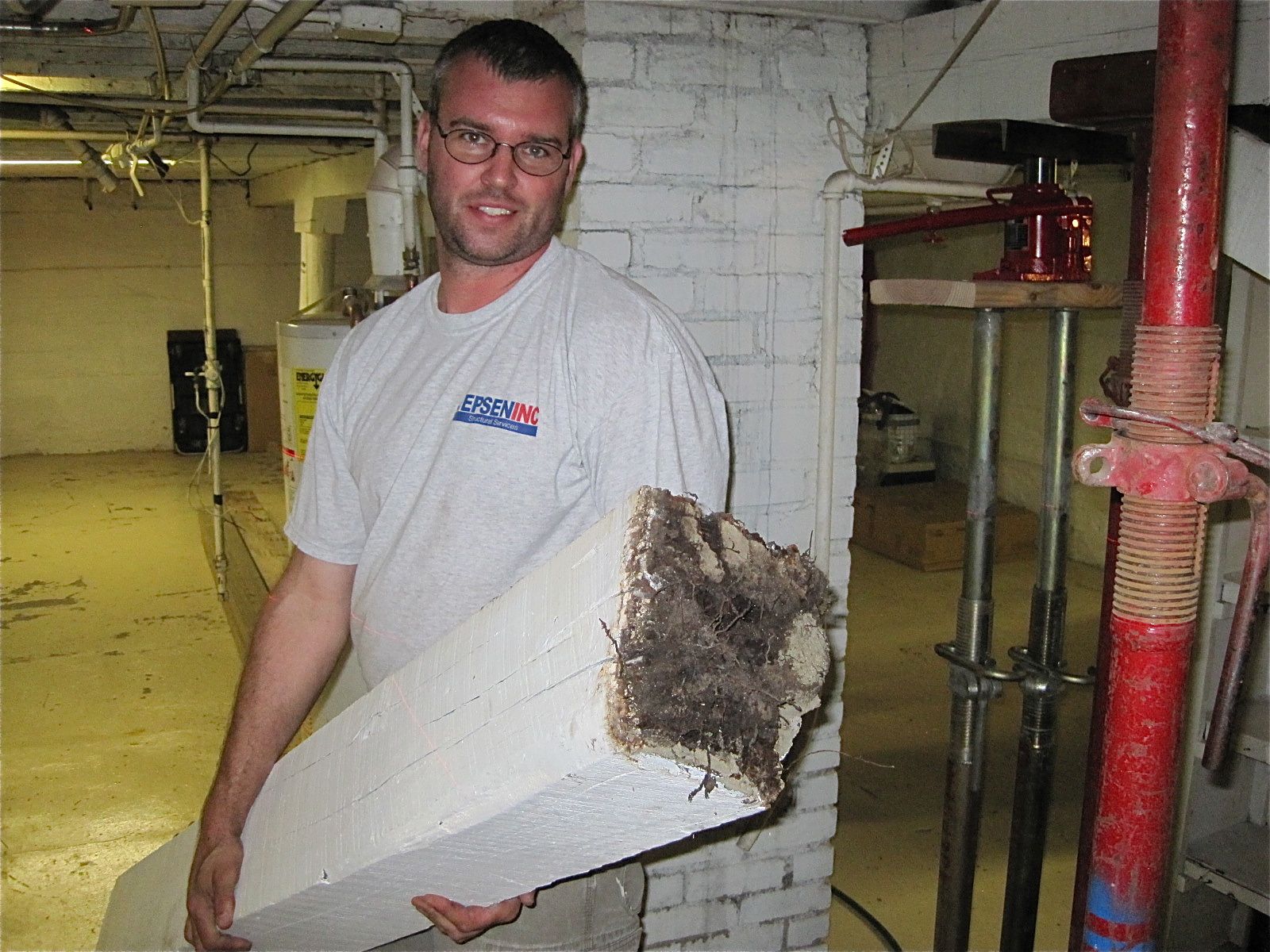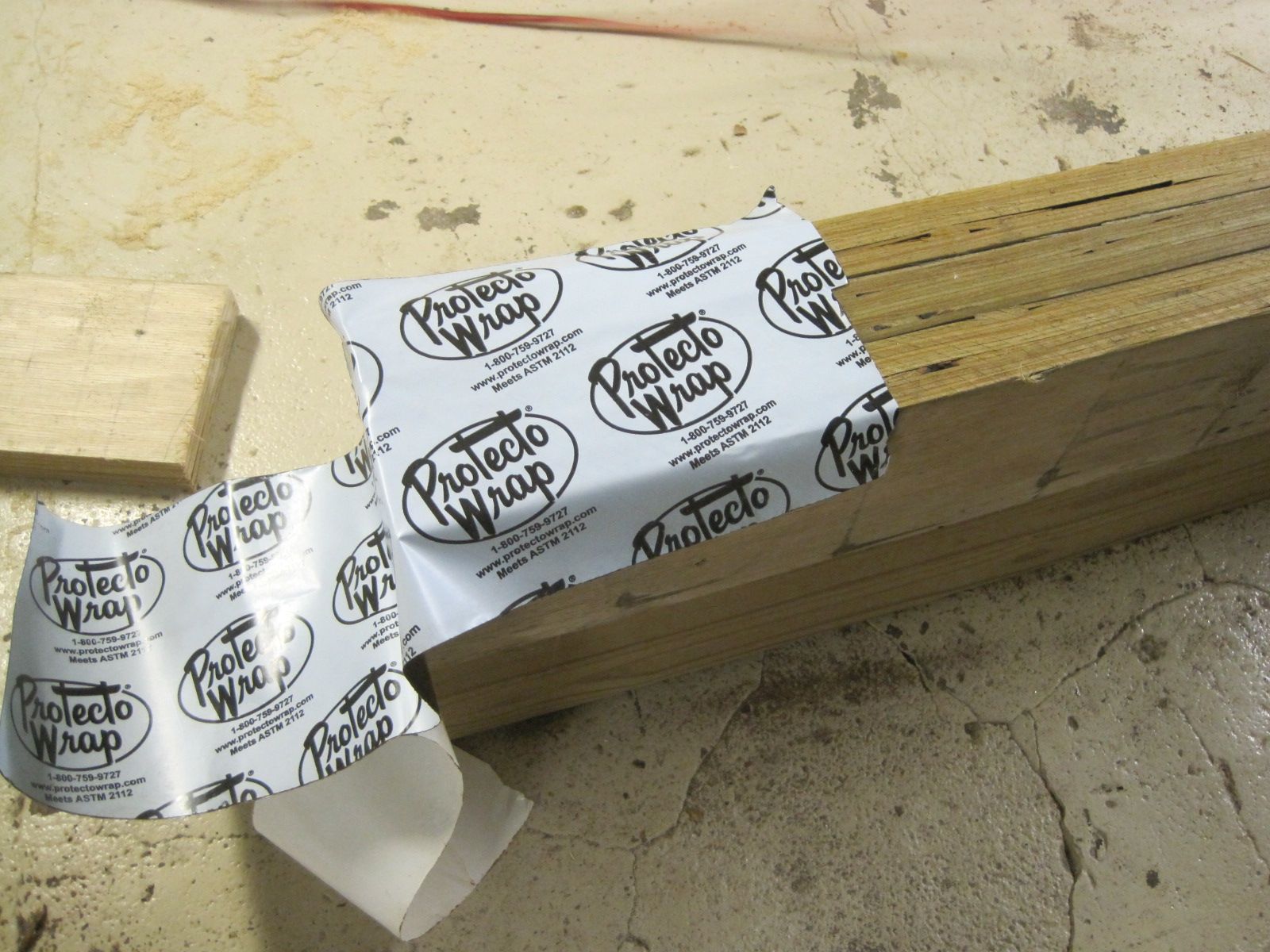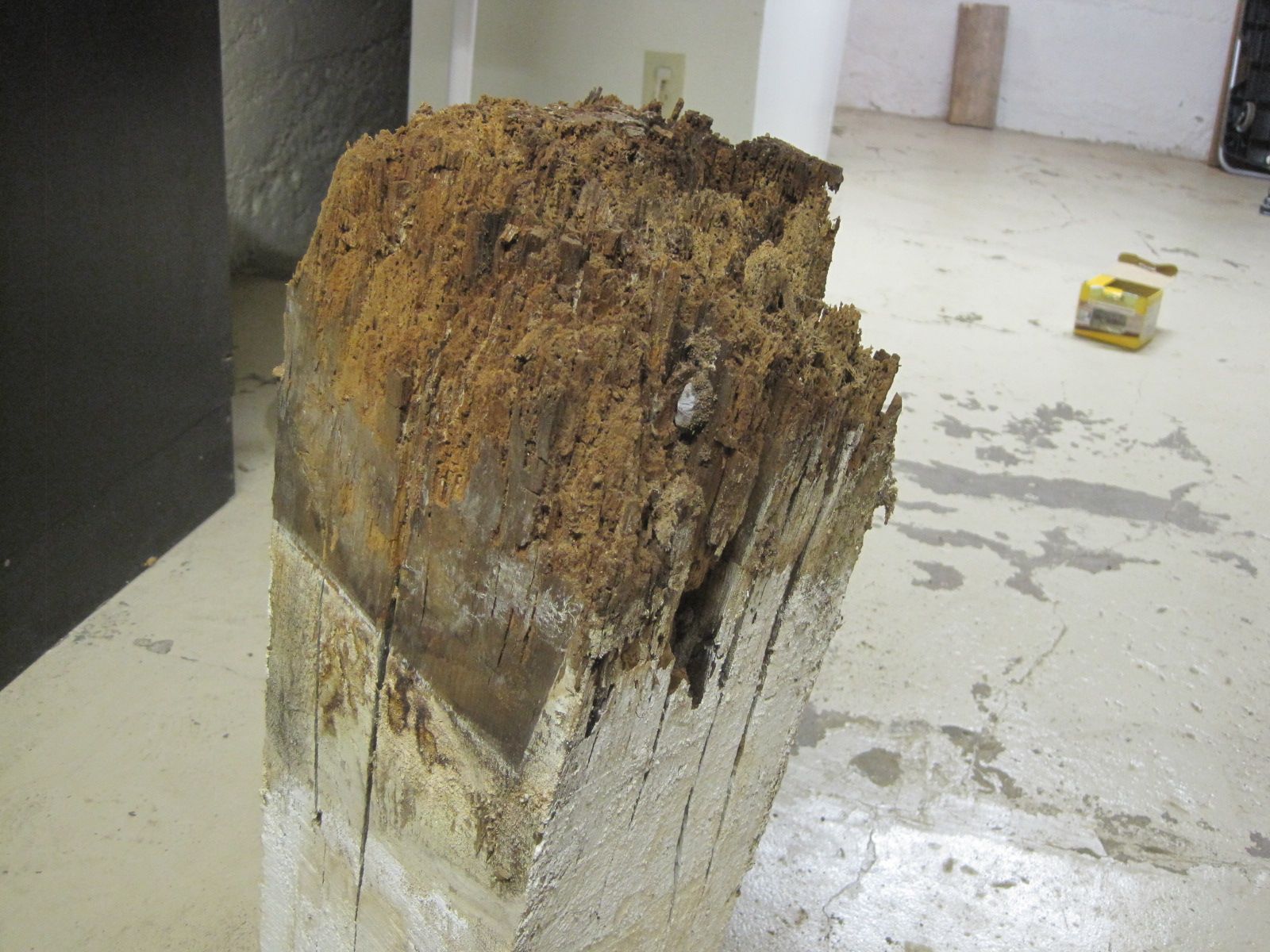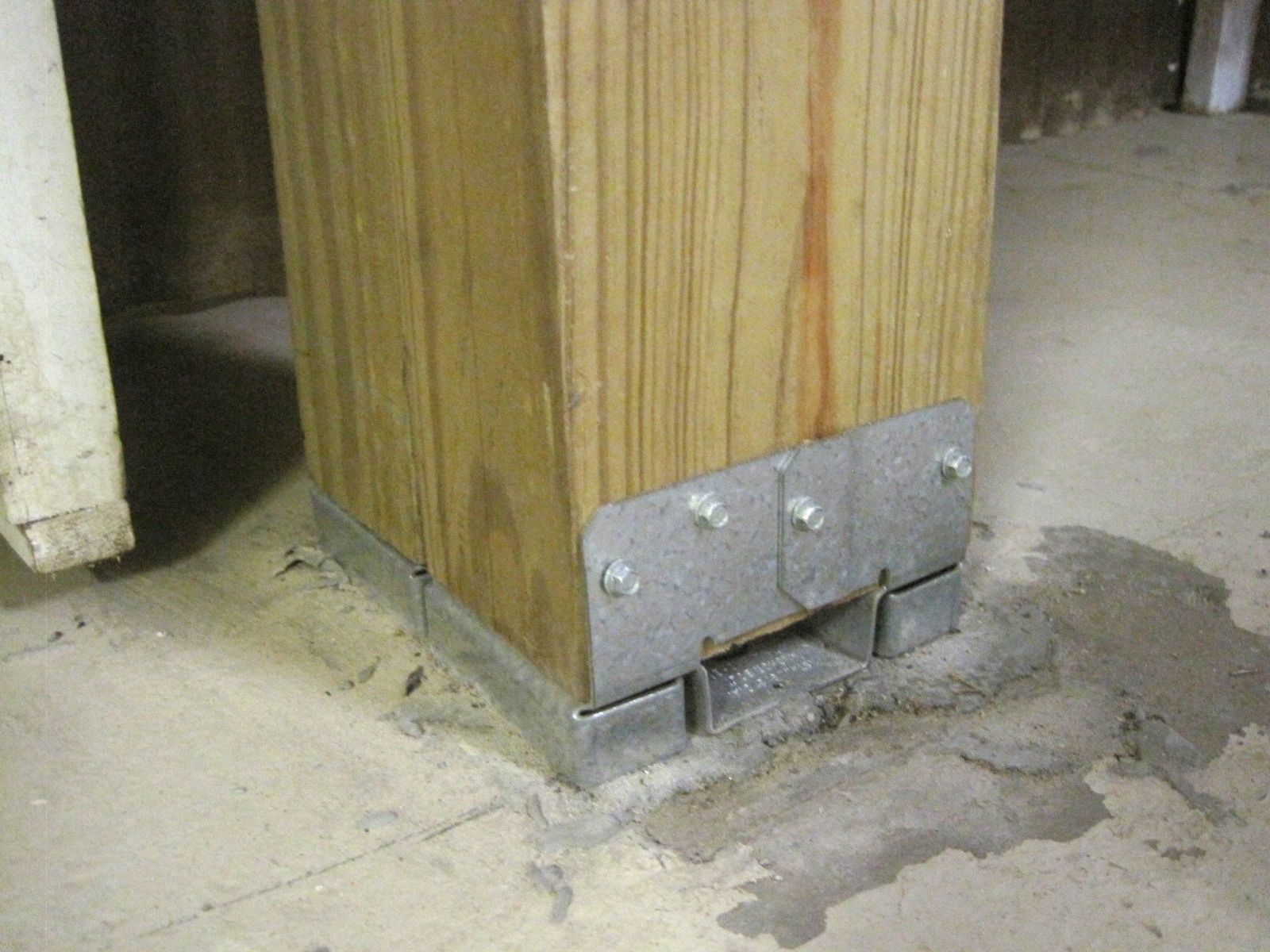
John Jepsen showing the removed post. Small plants had taken root, something he and his crew had never seen before.
It was one of many defects in the house identified by Inspector 7, not exactly hidden, but easy to overlook, given that large catchall category that so many other defects fell in. The annoying problems of inadequate home maintenance like toilet flapper leaks or aging caulk and peeling wallpaper, were so numerous that a mention of possible moisture damage to a basement beam did not trigger an alarm. Instead, the condition of the roof was the focus of attention while I was making the purchase offer.
But as non-conclusive as the observation was, it deserved some attention, and I contacted a structural engineer to assess it. When I told him the address, his response was, “Oh, you are outside that unstable zone near the creek…” I was impressed that he had a working mental map of the solid and shifting geology of South Minneapolis (and relieved I wasn’t on unstable ground).
John Jepsen of Jepsen Construction Services came by to look at my suspect beam and immediately recognized what needed to be done: a post had decayed, the beam had rotted, and both needed replacement. His pocket laser level projected onto my basement walls showed that the back end of the house above this beam had sunk. His firm could repair it. It was a small job for them. He was straightforward, easy to ask questions of, young but somehow experienced. I liked him, his bid was reasonable and two weeks later, he and his crew showed up to do the work.
It is not unlike what I imagine surgical transplants to be. One must somehow provide substitute functions, heart-lung machines, or blood bypasses, while the diseased organ is removed. The replacement is then installed in the calm and stress-free zone, and when it is ready, the support systems are shunted back to the main pathways, the organ comes to life, and resumes the job it was designed for.
In the case of structural support beams, the house is shored up by an assembly of temporary side beams and house jacks. They are put in place, and a noisy process of wrenching them up is done, lifting the house to its new elevation.
The pressure on the old beam is now gone, its post bears no weight and it can be removed. When my basement post was removed, the crew marveled at it. They’d seen plenty of posts that had gotten moist and rotted at the bottom, but had never seen one where the decay had progressed so far that new plants were rooting themselves in it!
The beam was removed next, and its end showed the advanced stages of moisture rot, the wood softening and dissolving in its environment. Again, the crew was impressed, and conveyed the sense that this was being taken care of in the nick of time. This is a little different than my mental image of these thing;, it seems like there should just be gradual degradations of material; there should be no “nick of time” moment. But there have been plenty of examples where a threshold is crossed, the most dramatic local example is the 35W bridge over the Mississippi that collapsed due to a structural member exceeding a threshold on a warm summer day.
The replacement beam was made of “microlam” a kind of super-plywood that has incredible strength and can extend for large spans to bear heavy loads. A new post was installed, its foot protected from moisture-wicking concrete. This end of the house will now be supported for at least another century.

The end of the new microlam beam is covered by a product with what must be the world’s best name for this application.
As disturbing as it was to have a defect like this in the house I had just bought, I took heart that it was detected and repaired by modern engineered materials. A century ago, things were designed with what was called an “ignorance factor”. It wasn’t really known what the limits of structural materials were, so they over-engineered to provide some safety margin, the margin of ignorance. Today, we know much more precisely the load bearing capacities of materials and the limits of structural geometry. We still include a safety margin, but now we know just what it is.


